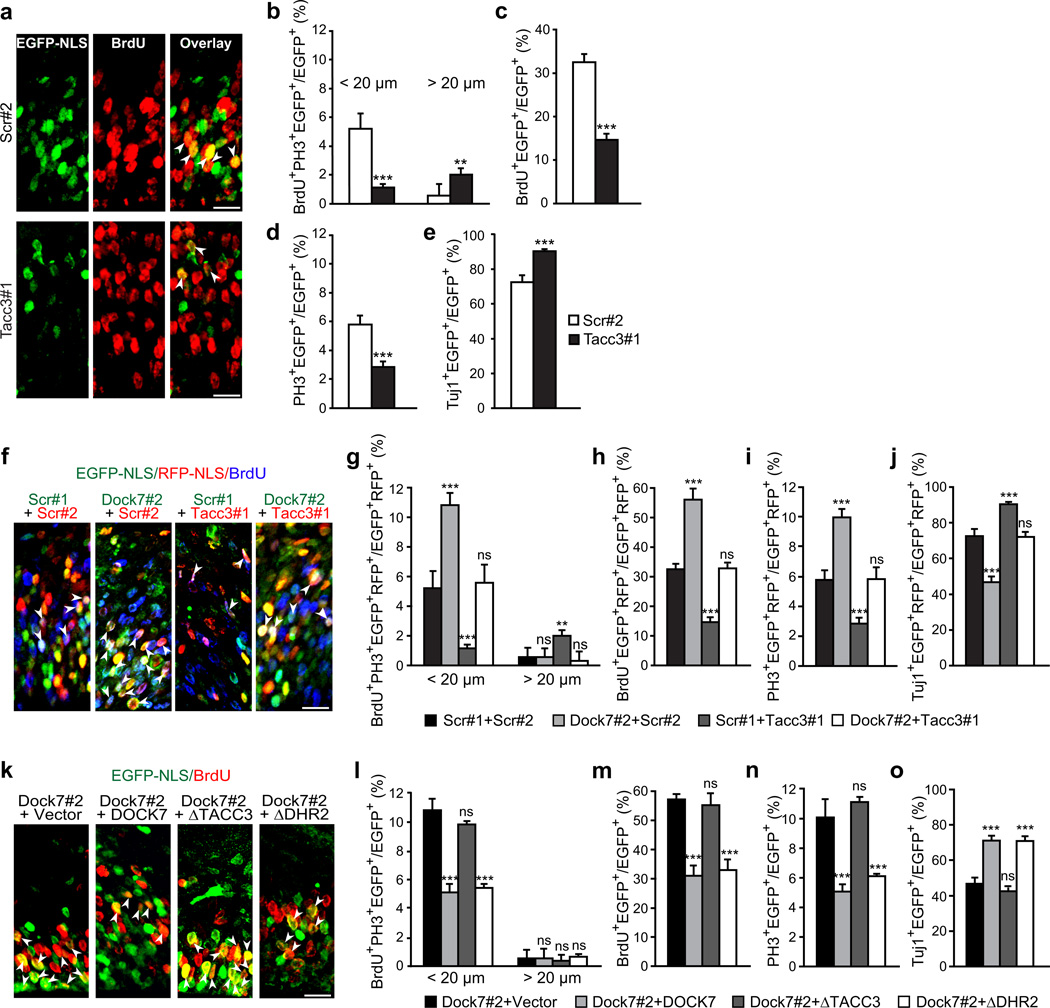Figure 7.
DOCK7 antagonizes TACC3 function during cortical neurogenesis. (a–e) DOCK7 and TACC3 have opposing functions. E13.5 mouse embryos were co-electroporated with plasmids expressing EGFP-NLS (a–d) or EGFP (e) and scr#2 or Tacc3#1 shRNA, pulse-labeled with BrdU for 2 h (a,c) or 6 h (b) at E15.5, or not labeled (d,e). Brain slices were co-immunostained for EGFP and BrdU (a,c), BrdU and PH3 (b), PH3 (d), or Tuj1 (e). (a) Confocal images of VZ/SVZ co-immunostained for EGFP and BrdU. Arrowheads indicate BrdU+ transfected cells. (b–e) Quantification of transfected cells that are BrdU+ and PH3+ < 20 µm or > 20 µm away from ventricular surface in VZ (b); BrdU+ in VZ (c); PH3+ in VZ (d); or Tuj1+ in entire neocortex (e). (f–j) Simultaneous knockdown of TACC3 rescues DOCK7 knockdown phenotypes. E13.5 embryos were co-electroporated with plasmids co-expressing EGFP-NLS (or EGFP in j) and scr#1 or Dock7#2 shRNA and/or plasmids co-expressing RFP-NLS (or RFP in j) and scr#2 or Tacc3#1 shRNA, and processed as in a–e. (f) Confocal images of VZ/SVZ co-immunostained for EGFP, RFP and BrdU. Arrowheads indicate double-transfected (EGFP-NLS+ and RFP-NLS+) cells that are BrdU+. (g–j) Quantification of double-transfected cells as in b–e. (k–o) DOCK7ΔTACC3 (ΔTACC3), but not DOCK7ΔDHR2 (ΔDHR2), fails to rescue DOCK7 knockdown phenotypes. E13.5 embryos were co-electroporated with EGFP-NLS-expressing plasmid and indicated constructs, and processed as in a–e. (k) Confocal images of VZ/SVZ co-immunostained for EGFP and BrdU. Arrowheads indicate BrdU+ transfected cells. (l–o) Quantification of transfected cells as in b–e. Data are mean ± s.e.m.; n = 739–2498 cells for each condition (see supplemental data for details). **P < 0.01, ***P < 0.001; ns, not significant; Student’s t-test (b–e) and one-way ANOVA (g–j, l–o); Scale bars, 20 µm.

